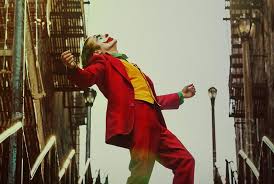Heartbeats & Hauntings: A Journey Through Terrifying Cinema
As the theater darkens and the screen flickers to life, there is a palpable tension in the air a mix of anticipation and dread. It's a feeling known well by fans of horror films who come to experience fright and fascination in equal measure. Horror cinema has long been a thrilling escape for audiences around the world, offering an adrenaline rush that is both terrifying and addictively enjoyable. From the earliest flickering images of phantoms to the latest digital nightmares, horror films have evolved, reflecting our deepest fears and darkest imaginings.
The roots of horror as a genre are as ancient as storytelling itself, with myths and legends often featuring elements designed to terrify their audience. However, it was with the invention of cinema that these tales took on a new life, capturing imaginations with unprecedented visual storytelling prowess. The silent era brought us classics like 'Nosferatu' (1922), which still chills viewers with its portrayal of the vampiric Count Orlok. The film's expressionist style and eerie atmosphere laid the groundwork for what would become staple elements of the horror genre.
As sound entered cinema, so too did screams. The 1930s saw Universal Studios' monsters Dracula, Frankenstein, The Mummy become icons of terror. These films tapped into societal fears of the unknown and the otherworldly, while also exploring themes of science gone awry and the dangers of playing God.
The psychological impact of these early horror films cannot be overstated. They provided a safe space for viewers to explore their fears and anxieties in a controlled environment. The catharsis offered by horror films is akin to riding a roller coaster; there's a thrill in the surrender to fear, knowing that once the lights come up, reality awaits unaltered.
Post World War II marked a shift in horror cinema as it began to mirror the existential dread of the atomic age and Cold War paranoia. Films like 'Invasion of the Body Snatchers' (1956) capitalized on fears of infiltration and loss of identity, while 'Psycho' (1960) introduced audiences to the terrors that might lurk within the human psyche.
The late 20th century gave rise to a new breed of horror: slashers. Movies such as 'Halloween' (1978) and 'Friday the 13th' (1980) brought terror closer to home, setting heart-pounding chases in suburban neighborhoods and summer camps. These films often featured a final girl surviving against all odds and spoke to societal anxieties about vulnerability and survival.
In recent decades, horror films have continued to evolve, with filmmakers using the genre to explore complex themes such as grief ('Hereditary,' 2018), racial tensions ('Get Out,' 2017), and technology ('The Ring,' 2002). In doing so, they've pushed the boundaries of what horror can be and how deeply it can unsettle us.
One defining characteristic of modern horror is its self-awareness. Movies like 'Scream' (1996) blend humor with horror while commenting on the genre itself. This meta-narrative approach invites viewers not only to engage with their fears but also to reflect on why they seek out such experiences.
Moreover, there has been an increasing emphasis on atmosphere and psychological terror over gore. Films like 'The Witch' (2015) use historical settings and unsettling imagery to create an overwhelming sense of dread without resorting to explicit violence. This return to atmospheric tension harkens back to horror's roots while managing to feel fresh and innovative.
Horror films also serve as societal mirrors reflecting cultural anxieties back at us. Post-9/11 fears were channeled through movies like 'Cloverfield' (2008), which used found-footage techniques for an intimate look at disaster from an individual's perspective. The genre often adapts to what haunts our collective consciousness, making it incredibly relevant and responsive.
One could argue that part of what makes horror films so captivating is their ability to evoke empathy. As viewers, we are compelled to feel for characters trapped in nightmarish scenarios, rooting for their survival even as we're scared on their behalf. This emotional engagement is a testament to storytelling's power it's not just about being scared but about feeling connected to others through shared fear.
The communal experience of watching a horror film in a theater is another aspect that amplifies its impact. There's something about being surrounded by others who are equally scared that intensifies the experience a collective gasp or scream can be as chilling as any onscreen terror.
While discussing iconic films that have shaped the genre, one must acknowledge 'The Exorcist' (1973). Often hailed as one of the greatest horror films ever made, it pushed previous boundaries in terms of subject matter and special effects. Its portrayal of demonic possession tapped into spiritual fears while also presenting psychological drama that resonated with audiences worldwide.
In recent years, streaming platforms have further diversified how we consume horror, with series like 'Stranger Things' blending nostalgia with supernatural thrills. The accessibility of content has led to an explosion in indie horror productions as well, giving rise to cult hits like 'It Follows' (2014), which uses its unique premise a curse transmitted through sexual contact to explore themes related both to intimacy and mortality.
As we continue our journey through terrifying cinema, it becomes clear that horror is more than just jump scares and screaming victims; it's a genre rich with history, meaning, and artistic expression. It taps into primal emotions fear, disgust, suspense and allows us to confront them head-on.
Horror films are not merely escapades into fiction; they are reflections on society's pulse its heartbeats and hauntings alike that continue evolving alongside our collective psyche. So next time you settle in for a scare, remember: you're not just watching a movie; you're participating in a tradition as old as fear itself a dance with darkness that has illuminated human nature since time immemorial.
